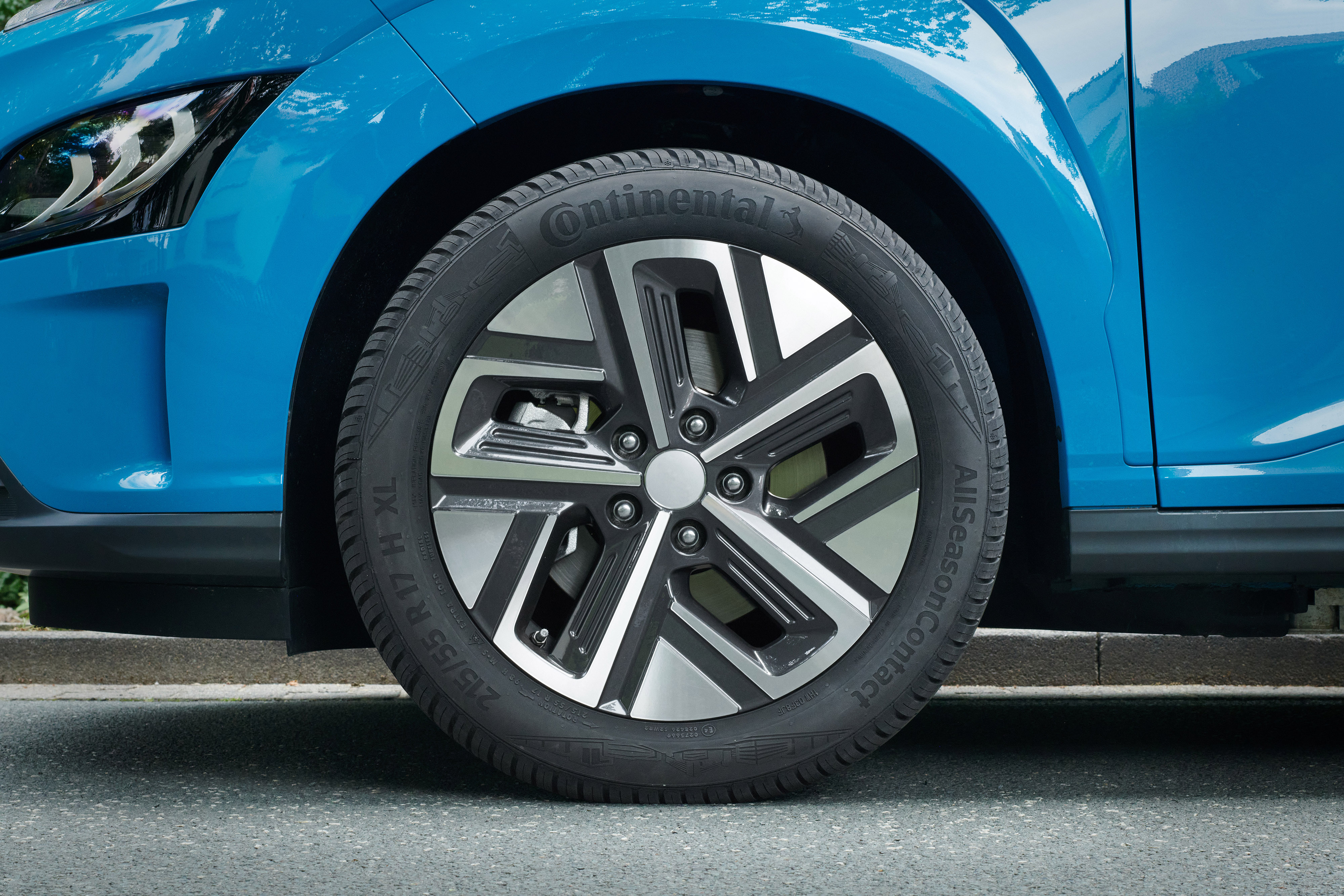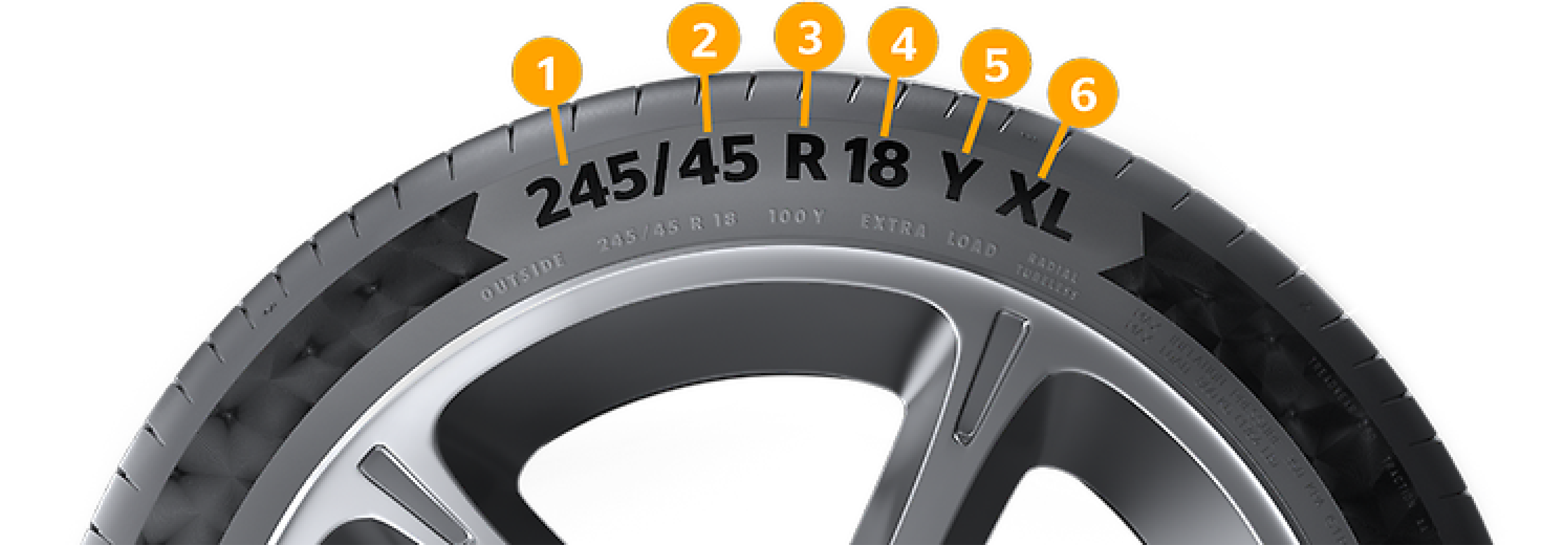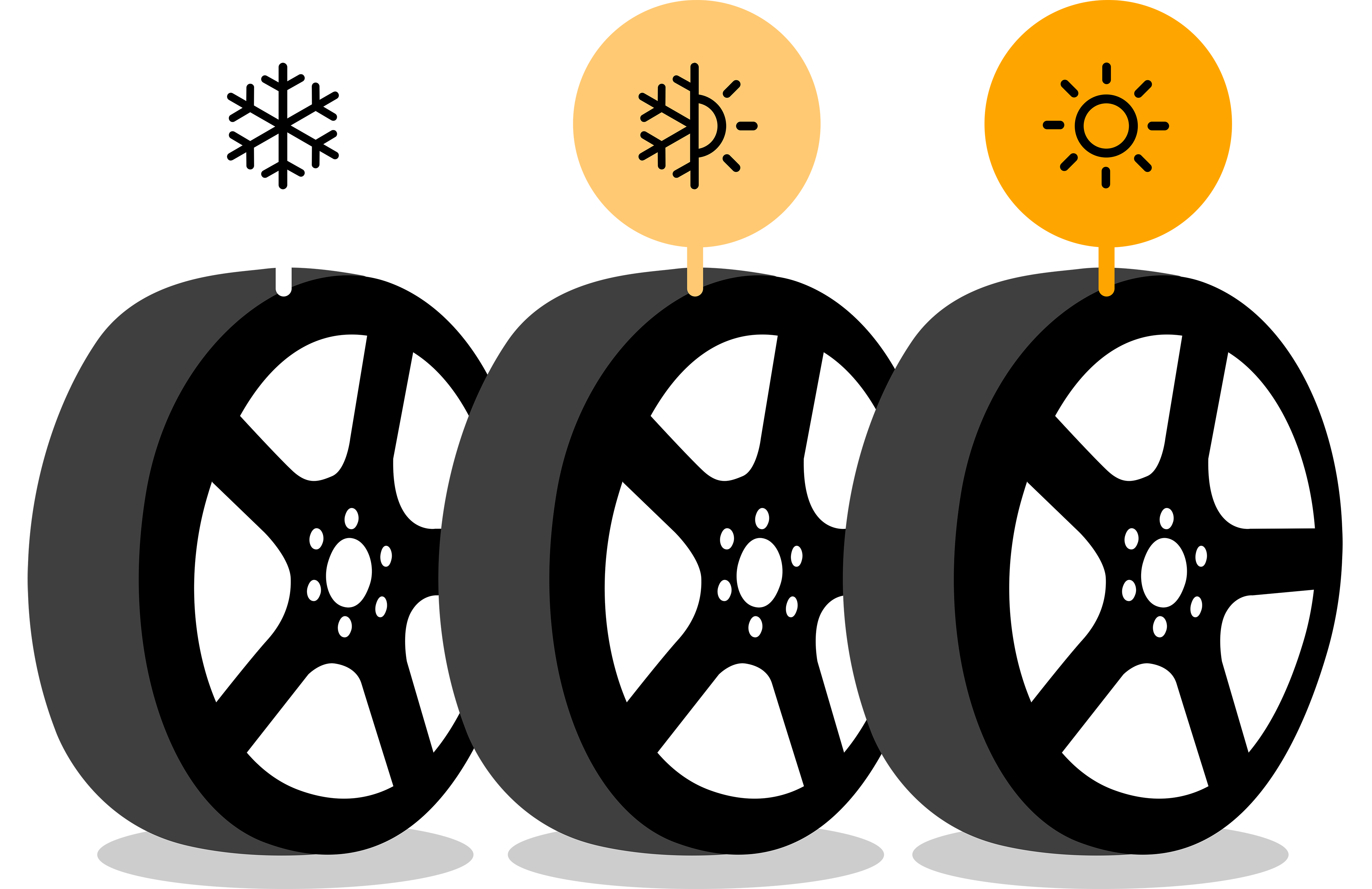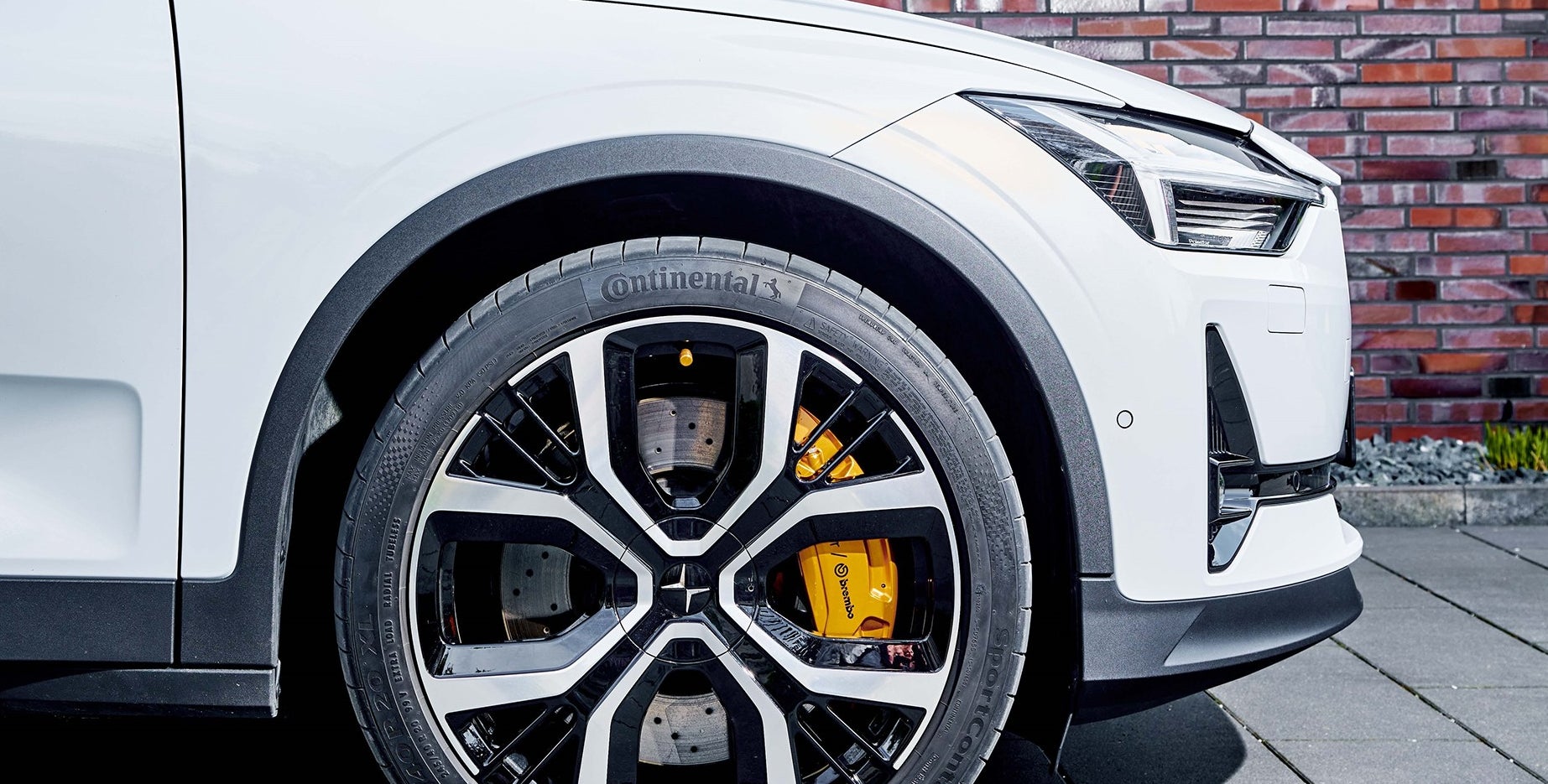
# Buying Tyres
New tyre purchasing guide
Know the facts before you buy new tyres
When it’s time to buy a set of new tyres for your car, there are multiple factors you’ll want to take into consideration. In addition to the vehicles manufacturer’s specification, you need to consider your driving style, budget and the region where you live. In our purchasing guide for tyres we will let you know what to consider before buying a new set of tyres in order to make the right choice.

Which tyres am I allowed to drive?
The tyre must have the recommended height-to-width aspect ratio specified by the manufacturer. In most cases, several tyre dimensions are permitted for one vehicle model. You can find out which tyres and rims, respectively which tyre widths, which rim diameters and which aspect ratios are suitable for you in the EU Certificate of Conformity (CoC).

What else do I have to look for when buying new tyres?
The tyre must match the distance travelled during the year. The prevailing weather in your region - especially in winter - also plays a role in your choice:
- Two sets of tyres (summer and winter tyres) can be worthwhile if you travel a lot by car and regularly have to deal with winter road conditions. In case of two sets, you will always be on the road with adapted tyres. An added benefit, the tyres also wear less.
- If, on the other hand, you travel short distances in moderate climate conditions throughout the entire year, all-season tyres are a good choice. You save the costs of changing tyres twice a year.
The performance and handling of your vehicle depend on the tyres. After all, tyres are the only point of contact between the car and the road.
Quick facts: Checklist new tyres
- Check your vehicle documentation for compatible tyre types.
- Tyre size is defined by width, diameter, and the height-to-width aspect ratio.
- The load index tells you how much load your vehicle is able to support.
- The speed rating tells you the maximum speed the tyre is capable of.
- Fit the same model and make of tyre on all four wheel positions.
Key requirements for new tyres
The first requirement when choosing new tyres is that they are compatible with your vehicle. Your owner’s manual and documentation will have a list of compatible tyre types. You can also find the the key characteristics of a tyre on its sidewall. Look at the tyres your car has now and use that as a starting point.
We strongly recommend that a vehicle uses the same tyres on each wheel position. This uniformity is vital to maintaining performance and control over your car.

Purchasing new tyres: Which information can be found on the tyre sidewall?
Tyre size is provided as width, diameter and height-to-width aspect ratio. The width is a three-digit number measuring the number of millimetres from one sidewall to the other (1). The ratio is a two or three-digit percentage of the height compared to the width (2). The diameter, specified in inches, must match the wheel size of your vehicle.
Tyres can also vary in construction, indicated by the letter R (3). Until the 1970s, cross-ply tyres were the most common; they had a casing made from rubberised cord plies with edges wrapped around the bead wire. In modern car engineering, the radial tyre has completely replaced the cross-ply tyre. The cords in a radial tyre casing run perpendicular to the direction of travel. Viewed from the side, the cords run radially – giving the tyre its name.
The tyres must be able to support the load of the vehicle; this capacity is called the load index. Look up the index to determine the weight, then multiply it by the number of tyres to get the total load supported. The speed rating, denoted as a letter on the sidewall (5), is the maximum speed the tyre is capable of. Be aware that tyres with a higher maximum speed tend to have faster tread wear. The speed rating must be at least as high as the vehicle’s top speed.
The manufacturer also provides you with information on the ideal tyre pressure for optimal operation of the car. Be very careful if operating a tyre near its maximum rated pressure; it changes vehicle handling and increases wear on the tyre.
Be sure to check the sidewall for other information like size (6), safety codes and association icons. They tell you whether it’s approved for your country and meets common quality standards.
What are the requirements for new tyres?
Taken together, the key requirements for a tyre narrow down your selection. But passenger car tyres still come with many other options. Choosing the right tyre for you depends on your driving style and budget.
Are you looking for a quiet, comfortable ride? Tyres in this category have a tyre tread designed to minimise noise. But the tread rubber may be softer, which increases the rate of wear. Therefore, quiet tyres are best suited for paved roads.
Or perhaps you’re looking for tyres that offer the best fuel efficiency? These tyres have a tread with lower rolling resistance, which provides substantially improved fuel economy.
If you drive on unpaved roads or enjoy some off-roading, tyre versatility is essential. An all-terrain tyre may be enough. Or you may consider the added sidewall protection of an off-road tyre. Many specialty 4x4 tyres, such as mud tyres, offer added traction for various terrains.
Finally, be aware that different tyre types handle differently. Give yourself time to adjust when driving, accelerating and braking with new tyres.
Video: Should I buy premium or budget tyres?
Our motoring expert John Smith is testing a set of new premium tyres and a set of budget tyres. He is explaining the differences between both tyre sets. Find out more which set you should choose and why before you are buying insufficient new tyres for your car!
What type of new tyres do I need: Winter, summer or all-season tyres?
Driving conditions vary throughout the year. When it’s time to buy new tyres, you should consider your local climate. Alternating between a set of summer and winter tyres – or all-season and winter tyres – may be more appropriate. Perhaps you can drive all year round with all-season tyres.

Winter tyre tread patterns are designed to be effective on snow and slush and can withstand cold temperatures. They offer improved handling and shorter braking distances on snow and ice.
Summer tyres, on the other hand, provide excellent grip, optimal handling and a shorter braking distance on dry roads in warm weather. However, they also provide good grip on wet roads after heavy rainfall.
Many cars come equipped with all-season, general-purpose tyres. All-season tyres work in a variety of conditions. They offer acceptable traction and decent tread life. But they will not perform as well as summer tyres in the summer. Nor are they as safe as winter tyres in extreme winter weather.
Where do I buy new tyres?
Consult your local Continental dealer who will assist you in making the right choice when buying new tyres.
Original equipment manufacturer tyres
Your car comes with pre-installed tyres. These are the original equipment (OE) tyres tyres chosen by the vehicle manufacturer, which meet their exact requirements having undergone a series of rigorous tests. OE tyres can be new designs, tweaks to an existing tyre or a preferred choice of stock tyre. For many drivers, picking OE tyres for their vehicle is a simple, fuss-free option.


